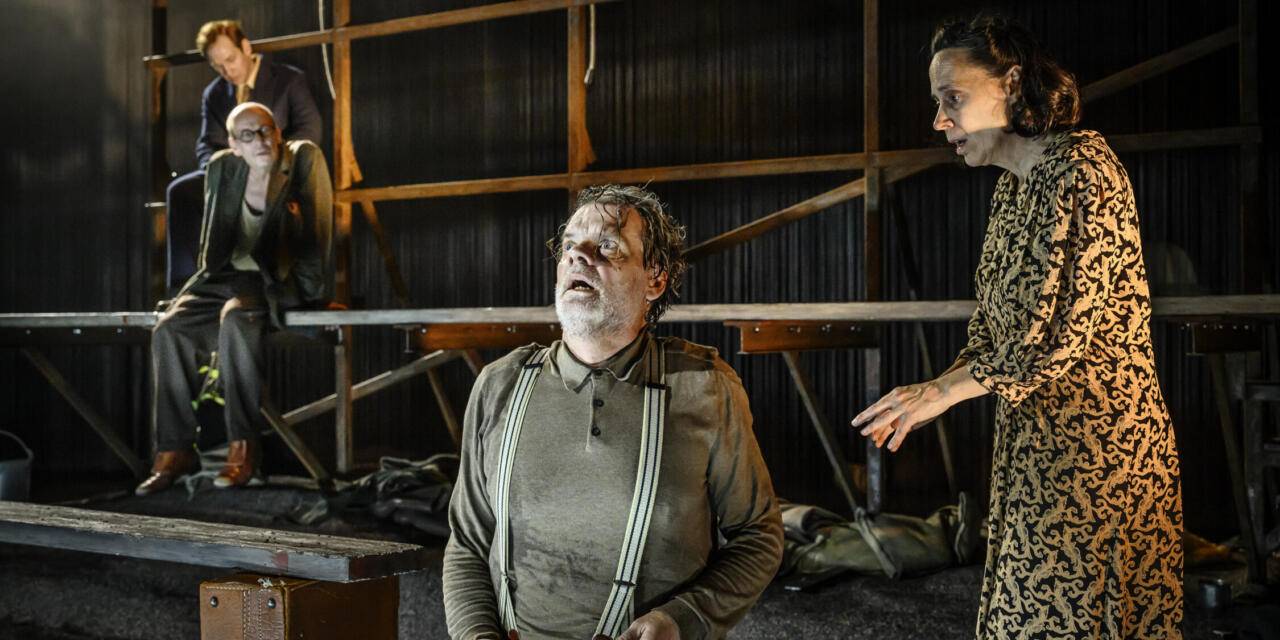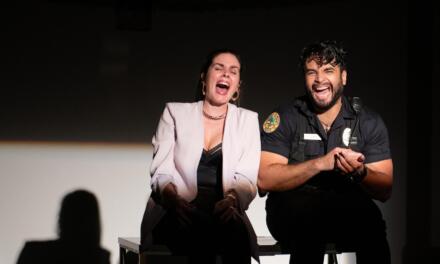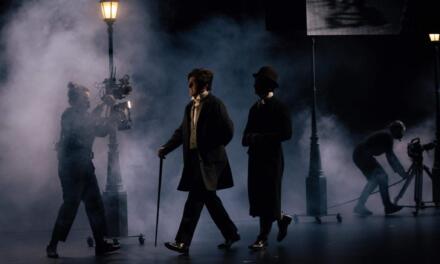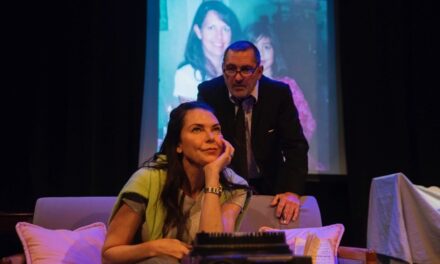In the Lilla scenen of Uppsala Stadsteater (City Theatre), a haunting echo of the past emerged, meticulously stitched from the pages of Stig Dagerman’s raw recounting of post-war Germany, German Autumn, a series of articles for the newspaper Expressen collected in as a book published in 1947 that has never been out of print. Dagerman was considered a wunderkind of the Swedish literary scene that included writers Erik Lindegren and Karl Vennberg. While many of Dagerman’s literary works and plays have been staged, this is the first theatrical adaptation of German Autumn. The adaptation is less a homage to Dagerman than a critical engagement with his reflections on the immediate aftermath of the Second World War in Germany – referred to by Harald Jähner as the ‘Time of Wolves’ – often pushed aside in hushed tones and shameful silences. Director, Anna Takanen, and dramatist, Stig Hansén, have taken up the demanding task of adapting a work without the usual fictional scaffolding, masterfully crafting a cohesive narrative tapestry out of Dagerman’s travel essays. The result is a chilling exploration of loss, redemption, guilt, shame, and humanity in a landscape laid waste by war.
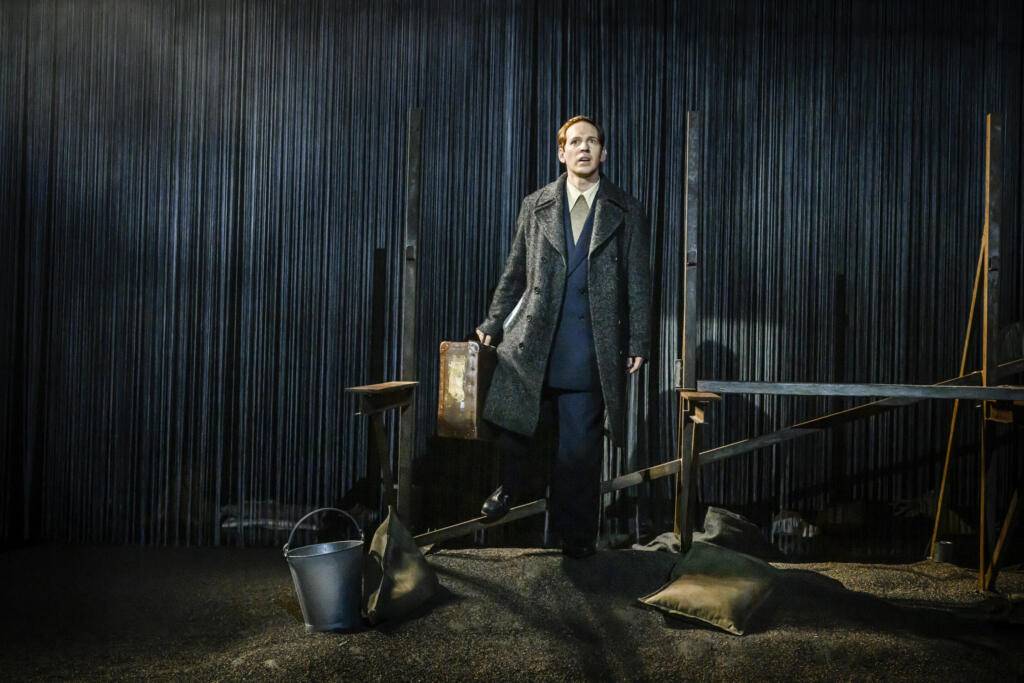
Dagerman arrives in postwar Germany in 1946. Photo by Sören Vilks.
Walking into the theatre, one is instantly immersed into the desolate world of 1946 Germany. The stark, Kantorian set design paints a grim picture of a nation in ruins – a bare wood and rusted metal structure, peppered with symbolic relics of war-torn everyday life, suitcases and damaged wheelbarrows. This signalled the ruins, which not only refer to the condition of physical buildings but to life itself: life lived in flooded basements, with sandbags, without roofs, across uneven and unsteady wooden planks. Symbolising this period of intense reconstruction, I thought about how quickly things are assembled, remade, wrought from any materials available or at hand. The abstract projections, devoid of colour, across the back of the stage index the visual archives of the period, reminding one strongly of the black and white landscapes of Roberto Rossellini’s Germany Year Zero (1948). In this shattered terrain, we meet a chorus of Germans, played by four actors that move through different personas Dagerman encountered on his journey through cities in ruins. The Germans arrive like grumpy ghosts, the clothes they are wearing cobbled from whatever materials survived the war and have not already been sold on the black market. The acting strikes a delicate balance between the naturalistic representation of Dagerman and the expressionistic chorus, who conjure a Brechtian presentational style. Their tormented interactions, not devoid of the black humour of a dark era, made the audience oscillate between moments of laughter and melancholy.
The protagonist, Dagerman, often breaking the fourth wall, is our window to this broken world. Through his eyes, we witness the grim realities of war: families reduced to living in abysmal conditions, resiliently carving out a semblance of existence from sheer chaos. At one point, he visits a family with a small baby and the only place to sit is an exposed toilet; they show him a clothes hanger crafted from barbed wire, which Dagerman buys to support the family. In another poignant scene, one of the Germans eats an apple while others look on with painful hunger. We cannot see the apple, but we can hear the crispness of the bite, the delicious, juicy flavour of the fruit that brings only brief respite from malnourishment. As Dagerman listens and observes, one can feel the weight of the stories, the haunting silence, gradually taking its toll on him, a silent nod to his own tragic demise by suicide at the young age of 31.
The dynamic use of the set, especially the evolving structure symbolising the swift reconstruction of post-war Germany, adds layers to the narrative. The sign bearing the infamous wartime warning for Allied forces against fraternising with the Germans is then replaced by a painting depicting an idyllic landscape, which begs the question of what the reconstruction is covering up, serving as a stark reminder of the turbulent era’s dichotomies. It calls out the layers of history – the destruction, the prejudices, and the uncertain reconstruction.
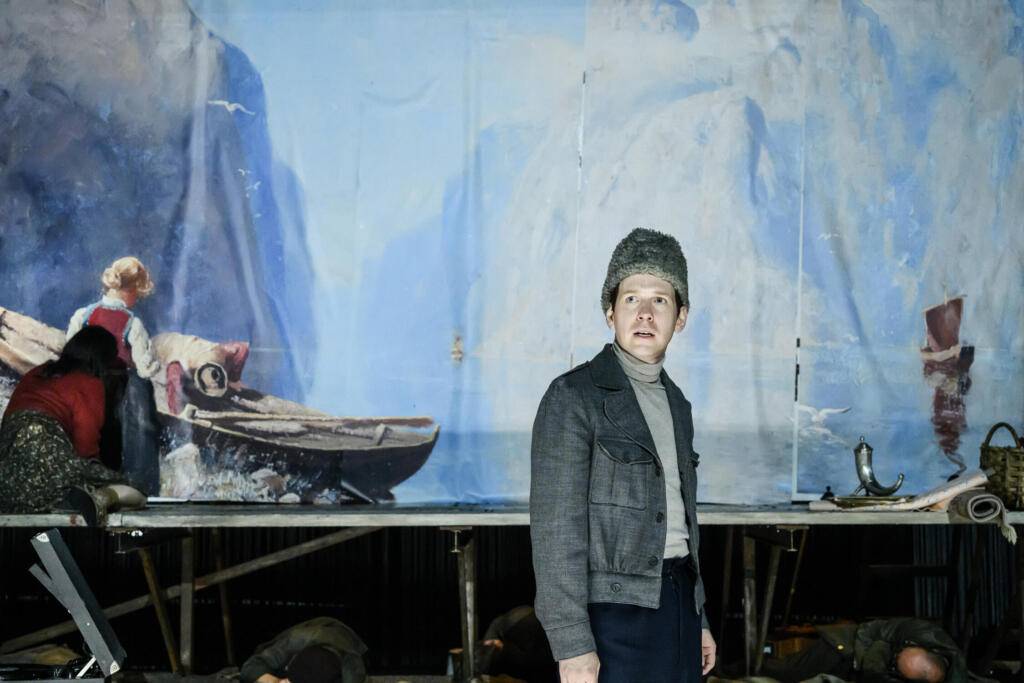
Dagerman stands in front of the painting depicting an idyllic landscape that covers over the sign: ‘Be on your guard. Don’t fraternize with Germans’. Photo by Sören Vilks.
In an era characterised by busyness as a defence against the stark reality of the aftermath, Dagerman’s confrontational approach through stories of ordinary Germans offers an alternative viewpoint – one of understanding and empathy. The production thus does not shy away from one of the most controversial aspects of Dagerman’s essays: the capacity to empathise with suffering, regardless of whether that suffering is deserved or not. The cost of living is delineated through Dagerman’s careful, concrete observations – a former soldier’s monthly pension is the equivalent of a few cigarettes. The tales of gruelling survival and resilience underscore the profound message that wars might end, but their aftermath lingers, shaping societies and generations long after the last bullets have been shot and last bombs dropped. Back in Sweden, Dagerman winds up a phonograph and listens to a cheerful Gershwin tune – the German chorus dance, but their movements are robotic, the memory of joy deprived of its essence.
German Autumn at Uppsala City Theatre is a sombre reflection, an introspective journey back in time. It reminds us, echoing Dagerman’s words, that wars may indeed be ‘poor teachers’, but their lessons, no matter how harsh, should never be forgotten. To witness this stage adaptation is to be reminded of the fine line between humanity and inhumanity and to appreciate the fragility of peace. One can only hope that audiences will, contrary to Dagerman’s epitaph, remember him often.
This post was written by the author in their personal capacity.The opinions expressed in this article are the author’s own and do not reflect the view of The Theatre Times, their staff or collaborators.
This post was written by Bryce Lease.
The views expressed here belong to the author and do not necessarily reflect our views and opinions.

